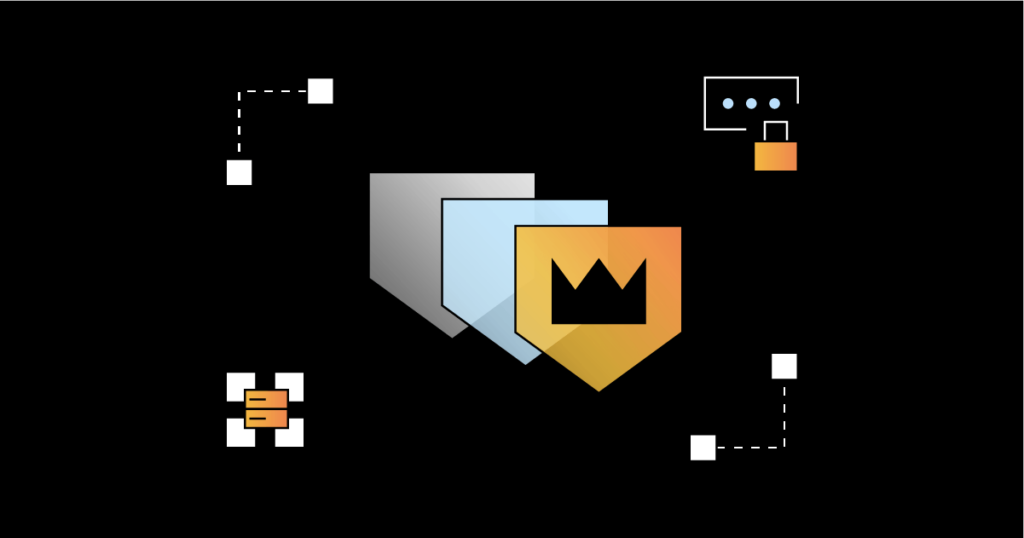IGA tools allow organizations to manage who has access to what. IGA’s primary focus is on business outcomes and operational efficiency—priorities that may not always align with security needs. In the pursuit of maximizing efficiency, it’s easy to miss potential attack vectors.
Employees often switch roles and keep access to resources they no longer need or leave their jobs entirely while their accounts remain active. That’s not only inefficient and redundant—it also gives attackers a way in.
In this blog, we’ll discuss what it means to secure IGA and ensure governance processes do not introduce security risks such as excessive, outdated or misused privileges. We’ll then dive into why the principle of least privilege is crucial to prevent them, and who should be involved in the process (spoiler alert: it’s the security team).
The risks of excessive access
Overstaying your welcome: Permissions that stick around come back around
Sometimes we accumulate things we don’t really need, and luckily for attackers, user permissions are one of those things. In the long run, excessive and unused permissions can significantly expand an organization’s identity attack surface without anyone even knowing it—until something goes wrong.
IGA assigns access but doesn’t always revoke it. The first thing to do is know what is actually being used rather than assuming users need all the privileges they were given. If a permission has not been used in months, does it really need to exist?
Forget about it: Stale users are still users
Employees leave, contracts end, people move on to their next adventure. It’s all part of corporate life. Their accounts, however, should leave and never return. Similarly, when people change roles or move to other departments, their old permissions remain intact until someone actively removes them, which often takes a while. After all, what’s the harm? They’re still part of the company.
These stale users and their permissions are easily forgotten—and even easier to exploit in the wrong hands.
Truth be told: Compliance alone does not guarantee security
Periodic access reviews are a compliance requirement, but compliance doesn’t always equal security. Security risks change constantly, and keeping track of what permissions have been granted and how they are actually being used in real time is crucial to blocking malicious access attempts and attacks before they can do damage.
From identity governance to identity security governance
Keeping tabs: Make sure users with access are actually using it
Organizations should continuously analyze access patterns and proactively remove unused permissions using real-time analytics and automated removal mechanisms. Implementing these measures will eliminate the accumulation of unnecessary access, mitigate insider threats, and prevent lateral movement before it develops into a security incident.
We’re only human: IGA is not focused on NHIs, but you should be
IGA is almost entirely focused on human identities, even though non-human identities, such as service accounts, are equally prevalent and can even be more dangerous in the wrong hands. NHIs often possess excessive privileges because that’s what they’re created to do—perform tasks not usually allowed with basic permissions. Organizations that don’t have full visibility and control over their service accounts’ privileges and usage face serious security risks.
You get what you need: Always follow the principle of least privilege
Finding out whether users are actually using their access privileges isn’t enough. Security is about knowing and managing risks, and while IGA tools do not inherently provide a security layer, they hold an important piece of the identity security puzzle. When properly integrated with security strategies, they can play a crucial role in reducing identity risks and improving overall identity security posture.
Privileges should always be kept to a minimum, and the risk associated with each entitlement should always be carefully evaluated and prioritized. The principle of least privilege should be the standard for security teams, not just as a one-off project but as a way of life.
Final thoughts: Achieving and maintaining least privilege
IGA plays a critical role in managing identities, but it wasn’t built to enforce security. So how can you achieve least privilege? Just remember to follow these steps and you’ll be good (if not better!):
- Move from periodic reviews to continuous validation. Annual or quarterly access reviews aren’t enough: security teams need real-time insights into excessive permissions and the ability to act immediately.
- Automate the removal of unused access. Manually removing old permissions isn’t scalable, but automating this process helps enforce least privilege without adding unnecessary workload.
- Align security with IGA. IGA provides governance, but security needs visibility into how access is actually used. Integrating the two ensures governance decisions are based on security needs.
- Continuously monitor access behavior. Tracking access activity in real time helps detect anomalies and remove permissions before they become a problem.
Remember: attackers don’t need fancy software vulnerabilities when excessive access is already out there. It is so much easier to simply log in using some old compromised credentials—especially when they have lots of access privileges. By combining identity governance with identity security posture and real-time monitoring and enforcement, organizations can make sure users only have the access they actually need, thereby shrinking their identity attack surface and limiting lateral movement.

